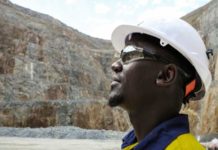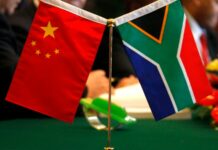
[miningmx.com] — PLEASANTRIES all-round and the interpretation of law typified the first day of a potentially explosive hearing in the North Gauteng High Court over the disputed 21.4% mineral right in Sishen mine, as ArcelorMittal SA argued why it never had to apply for this right it previously owned.
Anyone expecting fireworks would’ve been disappointed. From the first day in March 2010 when Kumba made public that the right had been granted to an unknown “third party’, the case caught the public’s attention like few other corporate battles have done before; precisely for touching the raw nerves of transformation, corporate oversight and ethics, corruption, service delivery as well as political patronage.
Yet Amsa, led by Senior Counsel Michael Kuper, delved for most of the day into legal definitions and previous judgments to argue that the Mineral and Petroleum Resources Act (MPRDA) didn’t provide for the granting of fractional rights, in effect absolving it of the responsibility to have applied for its previously held 21.4% right.
“Our position in the court proceedings is essentially that Sishen Iron Ore Company (SIOC; a Kumba subsidiary) holds 100% of the Sishen mining right,’ the group said in a short statement issued after Monday’s proceedings. “This does not mean that we are aligned in any way with Kumba.
“We are seeking relief that is inconsistent with the relief that Kumba is seeking. We believe, however, that Imperial Crown Trading 289 should not have been awarded a 21.4% prospecting right.’
Its motivation for holding this view becomes clear in the statement’s final sentence:
“We also maintain, in the arbitration proceedings between us and Kumba that Kumba remains obliged to supply our 6.25 million tonnes of iron or at cost plus 3%, in terms of our agreement.’
Kumba’s Senior Counsel, Chris Loxton, had around 45 minutes before the close of proceedings to argue why Amsa’s interpretation of the law was flawed. Tuesday will probably kick off with more of the same.
Yet, as the parties start to work through the evidence contained in the around 5,000 pages submitted to court, one would assume the technicalities of law would make way for more searing and uncomfortable discussions on how the case became so contentious in the first place.
These are but a probable few:
– Are there too many similarities in the applications of Kumba and ICT?
– Did Kumba “post date’ its application?
– Did the mess started because Amsa forgot to apply for its right?
– What exactly happened in the DMR’s North Cape regional offices over the Workers’ Day long weekend of 2009?
Expect the temperature to be turned a few notches up in the coming days.











